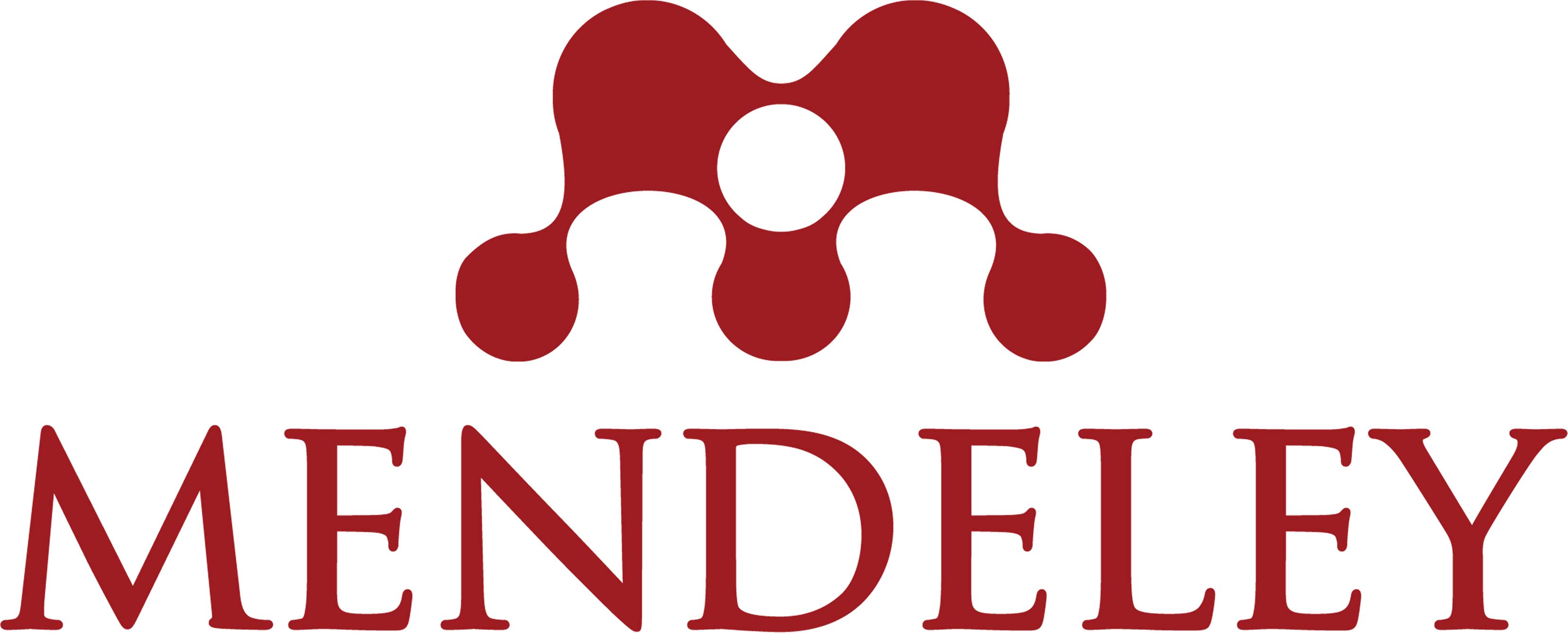Students' Perception on The Use of Dual-Coding Theory (DCT) in Reading Descriptive Texts
DOI:
https://doi.org/10.17977/um064v2i22022p205-216Keywords:
-Abstract
Abstract: This study aims to investigate seventh graders’ perception on the implementation of Dual-Coding Theory (DCT) in reading descriptive texts at MTsN 1 Kota Malang. It involved ten regular classes with a total of 296 students. The data were collected through questionnaires. The questionnaire consists of 20 statements with a 4-point Likert scale, concerning about the students’ opinion on (1) the effect of pictures on the students’ ability to conjure up objects, (2) the effect of pictures on their attitudes, and (3) the use of pictures in identifying word meaning and main idea. The findings show that the perception of the students on the use of DCT in reading descriptive text is positive. 91.3 percent students agree that the use of DCT contributes positively to the learning process. First, it helps students to imagine what is written in the descriptive text. Second, it attracts the students’ interest and increases their motivation to read descriptive text. Third, DCT helps students in identifying word meanings and its main ideas. Therefore, DCT is an effective method to enhance descriptive reading skill.Keywords: perception; reading comprehension; Dual-Coding Theory
Abstrak: Penelitian ini bertujuan untuk mengetahui persepsi siswa kelas 7 MTsN 1 Kota Malang terhadap penggunaan Dual-Coding Theory (DCT) dalam membaca teks deskriptif. Kelas tersebut terdiri dari 10 kelas reguler yang berjumlah 296 siswa. Data diambil melalui kuesioner. Kuesioner terdiri dari 20 pernyataan dengan menggunakan skala Likert 4 poin, mengenai persepsi siswa pada (1) pengaruh gambar terhadap kemampuan siswa dalam membayangkan benda, (2) pengaruh gambar terhadap sikap siswa, dan (3) penggunaan gambar dalam mengidentifikasi makna kata dan gagasan utama. Hasil penelitian menunjukkan bahwa persepsi siswa tentang penggunaan DCT dalam membaca teks deskriptif adalah positif. 91,3 persen siswa setuju penggunaan DCT memberikan kontribusi positif terhadap proses pembelajaran. Pertama, membantu siswa untuk membayangkan apa yang tertulis dalam teks deskriptif. Kedua, menarik minat siswa dan meningkatkan motivasi mereka untuk membaca teks deskriptif. Ketiga, DCT membantu siswa dalam mengidentifikasi makna kata dan gagasan utamanya. Oleh karena itu, DCT merupakan metode yang efektif untuk meningkatkan keterampilan membaca teks deskriptif.
Kata kunci: persepsi; pemahaman membaca; Dual-Coding Theory
References
Anugrah, L. D., Thabran, Y., & Makmur. (2017). Students’ perception toward the use of pictures in learning writing descriptive text at SMAN 4 Jambi city (Undergraduate article, Universitas Jambi, Jambi). Retrieved from https://repository.unja.ac.id/id/eprint/2999
Aziz, T. (2019). Students’ difficulties in reading comprehension at the second grade of Junior High School SATAP 3 Betara (Undergraduate thesis, State Islamic University of Sultan Than Saifuddin, Jambi). Retrieved from http://repository.uinjambi.ac.id/2187/
Choi, N., Kang, S., & Sheo, J. (2020). Children’s interest in learning English through picture books in an EFL context: The effects of parent–child interaction and digital pen use. Education Sciences, 10(2), 40. doi: https://doi.org/10.3390/educsci10020040
Csabay, N. (2006). Using comic strips in language classes. English Teaching Forum, 44(1), 24–26. Retrieved from https://search.proquest.com/docview/1826538962?accountid=10673 NS
Dahliana, S. (2016). Partnership activity in EFL reading. Englisia: Journal of Language, Education, and Humanities, 3(2), 83–90. doi: https://doi.org/10.22373/ej.v3i2.1022
Enever, J., & Schmid-Schönbein, G. (2006). Picture books and young learners of English. Munich: Langenscheidt.
Erya, W. I., & Pustika, R. (2021). Students’ perception towards the use of Webtoon to improve reading comprehension skills. Journal of English Language Teaching and Learning, 2(1), 51–56. Retrieved from http://jim.teknokrat.ac.id/index.php/english-language-teaching/article/view/762
Evriani, E. (2019). The influence of using Read Imagine Describe Evaluate Repeat (R.I.D.E.R) strategy towards students’ reading comprehension in descriptive text at the first semester of the tenth grade of MA Raudlatul Mutta’Allimin Kasui Way Kanan in the academic year 2018/2019 (Undergraduate thesis, State Islamic University Raden Intan Lampung, Bandar Lampung). Retrieved from http://repository.radenintan.ac.id/8864/
Fadilah, A. E., Anugerahwati, M., & Prayogo, J. A. (2017). EFL students’ preferences for oral corrective feedback in speaking instruction. Jurnal Pendidikan Humaniora, 5(2), 76–87. doi: https://doi.org/10.17977/um030v5i22017p076
Gaertner, H. (2014). Effects of student feedback as a method of self-evaluating the quality of teaching. Studies in Educational Evaluation, 42, 91–99. doi: https://doi.org/10.1016/j.stueduc.2014.04.003
Graham, S. (2011). Comics in the classroom: Something to be taken seriously. Language Education in Asia, 2(1), 92–102. doi: https://doi.org/10.5746/leia/11/v2/i1/a07/graham
Hayikaleng, N. (2019). The effects of using dual-coding theory in teaching English reading comprehension among vocational students at Narathiwat Technical College. International Journal of Arts Humanities and Social Sciences Studies, 4(6), 7–12. Retrieved from http://www.ijahss.com/vol4-issue6.html
Hidayanto, H. N. (2019). Students’ perception towards the use of pictures in writing descriptive text. Widya Wacana: Jurnal Ilmiah, 14(1). doi: https://doi.org/10.33061/ww.v14i1.2751
Hidayati, R. (2019). Improving students’ reading comprehension using pictures on report texts. JUPE: Jurnal Pendidikan Mandala, 4(4), 93–100. doi: https://doi.org/10.36312/jupe.v4i4.749
Jafar, T. N. (2012). Improving students’ reading comprehension using small group interaction (Undergraduate thesis, Universitas Muhammadiyah Purwokerto, Purwokerto). Retrieved from http://repository.ump.ac.id/3423/
Jayanti, F. G. (2016). Reading difficulties: comparison on students’ and teachers’ perception. Proceedings of ISELT FBS Universitas Negeri Padang, 4(1), 296–301. Retrieved from http://ejournal.unp.ac.id/index.php/selt/article/view/6939
Kanellopoulou, C., Kermanidis, K. L., & Giannakoulopoulos, A. (2019). The dual-coding and multimedia learning theories: Film subtitles as a vocabulary teaching tool. Education Sciences, 9(3), 210. doi: https://doi.org/10.3390/educsci9030210
König, J., & Pflanzl, B. (2016). Is teacher knowledge associated with performance? On the relationship between teachers’ general pedagogical knowledge and instructional quality. European Journal of Teacher Education, 39(4), 419–436. doi: https://doi.org/10.1080/02619768.2016.1214128
Kurniawan, D. (2020). Improving the students’ reading comprehension through speed reading technique among the tenth grade at SMA Ma’arif 1 Seputih Banyak Central Lampung (Undergraduate thesis, State Institute for Islamic Studies of Metro, Lampung). Retrieved from https://repository.metrouniv.ac.id/id/eprint/1696/
Latief, M. A. (2019). Research methods on language learning an introduction. Malang: Universitas Negeri Malang.
Moriyanti, Muna, H., & Ismail, N. M. (2019). Visualization and comprehension: Corroborating children’s reading ability. Englisia Journal, 7(1), 26–40. doi: https://doi.org/10.22373/ej.v7i1.4508
Novita, Y., & Kristiawan, M. (2017). The effect of picture series on students’ reading comprehension of analytical exposition text. Iqra’ (Jurnal Kajian Ilmu Pendidikan), 2(1), 89–98. Retrieved from https://journal.iaimnumetrolampung.ac.id/index.php/ji/article/view/89
Nurhayati, D. A. W. (2014). Using picture series to inspire reading comprehension for the second semester students of the English department of IAIN Tulungagung. Dinamika Ilmu, 14(2), 176–189. doi: https://doi.org/10.21093/di.v14i2.14
Paivio, A. (1971). Imagery and verbal processes. New York: Holt, Rinehart, and Winston.
Pasaribu, E. T. (2017). The students’ perception on the use of pictures to improve descriptive paragraph writing. JET: Journal of English Teaching, 3(2), 134–142. doi: https://doi.org/10.33541/jet.v3i2.705
Rae, B. (2018). Picture cues and reading comprehension: The impact of picture cues on the reading comprehension of first grade students with autism (Master’s thesis, St. John Fisher College, Rochester, New York, United States). Retrieved from https://fisherpub.sjfc.edu/education_ETD_masters/366
Razalli, A. R., Thomas, R. O., Mamat, N., & Yusuf, N. (2018). Using text with pictures in primary school to improve reading comprehension for hearing impaired students. Journal of ICSAR, 2(1), 19–27. doi: https://doi.org/10.17977/um005v2i12018p019
Rohman, I. M. (2016). The effectiveness of using pictures in teaching vocabulary (Undergraduate thesis, Walisongo State Islamic University, Semarang). Retrieved from http://eprints.walisongo.ac.id/6590/1/113411063.pdf
Roslina. (2017). The effect of picture story books on students’ reading comprehension. Advances in Language and Literary Studies, 8(2), 213–221. doi: https://doi.org/10.7575/aiac.alls.v.8n.2p.213
Saad, A. A., Yaacob, A., & Aspalila, bt. S. (2017). Effective vocabulary learning strategies in EFL situation: Evidence from SSM Malaysia. Science International, 29(6), 1249–1255. Retrieved from http://www.sci-int.com/pdf/636515304969009877.pdf
Sari, D. P. (2017). Using text-related pictures to increase students’ reading comprehension of descriptive text. Inovish Journal, 2(2), 116–132. Retrieved from http://ejournal.polbeng.ac.id/index.php/IJ/article/view/238
Suryanto. (2017). An investigation on English reading comprehension problems in Indonesian cultural contexts. Proceedings of International Conference on Education, Science, Art and Technology, 1(1), 200–205. Retrieved from https://ojs.unm.ac.id/icesat/article/view/3738
Tahir, M. H. M., Albakri, I. S. M. A., Adnan, A. H. M., Shaq, M. S. Y., & Shah, D. S. M. (2020). The application of visual vocabulary for ESL students’ vocabulary learning. Arab World English Journal, 11(2), 323–338. doi: https://doi.org/10.24093/awej/vol11no2.23
Trajanov, M. (2016). The relationship between teaching styles and strategies and FL learners’ motivation (Undergraduate thesis, University of Zagreb, Zagreb, Croatia]. Retrieved from http://darhiv.ffzg.unizg.hr/id/eprint/6296/
Usman, B., Fata, I. A., & Pratiwi, R. (2019). Teaching reading through Know-Want-Learned (KWL) strategy: The effects and benefits. Englisia Journal, 6(1), 35–42. doi: https://doi.org/10.22373/ej.v6i1.3607
Yunus, M. M., Salehi, H., & John, D. S. A. (2013). Using visual aids as a motivational tool in enhancing students' interest in reading literary texts. Proceedings of the 4th International Conference on Education and Educational Technologies (EET '13), 114–177. Retrieved from https://arxiv.org/abs/1305.6360
Zaim, M., Refnaldi, & Rahmiyanti, R. (2019). Students’ perceptions on teachers’ teaching strategy and their effects towards students’ achievement. International Journal of Research in Counseling and Education, 4(1), 28–34. doi: https://doi.org/10.24036/00207za0002
Downloads
Published
How to Cite
Issue
Section
License
Copyright (c) 2022 Evi Khoirun Nisa, Sri Andreani, Utari Praba Astuti

This work is licensed under a Creative Commons Attribution-ShareAlike 4.0 International License.





























